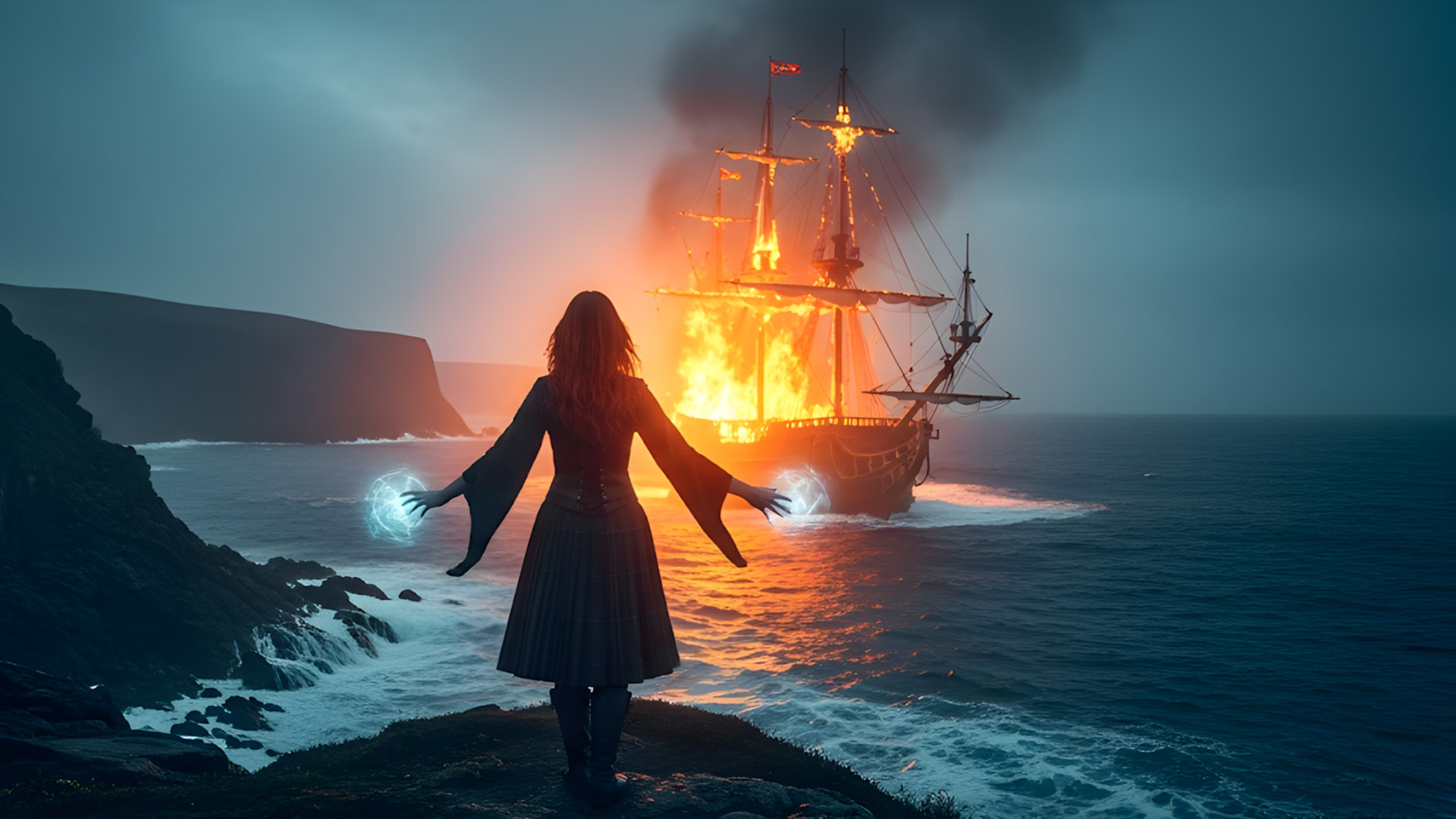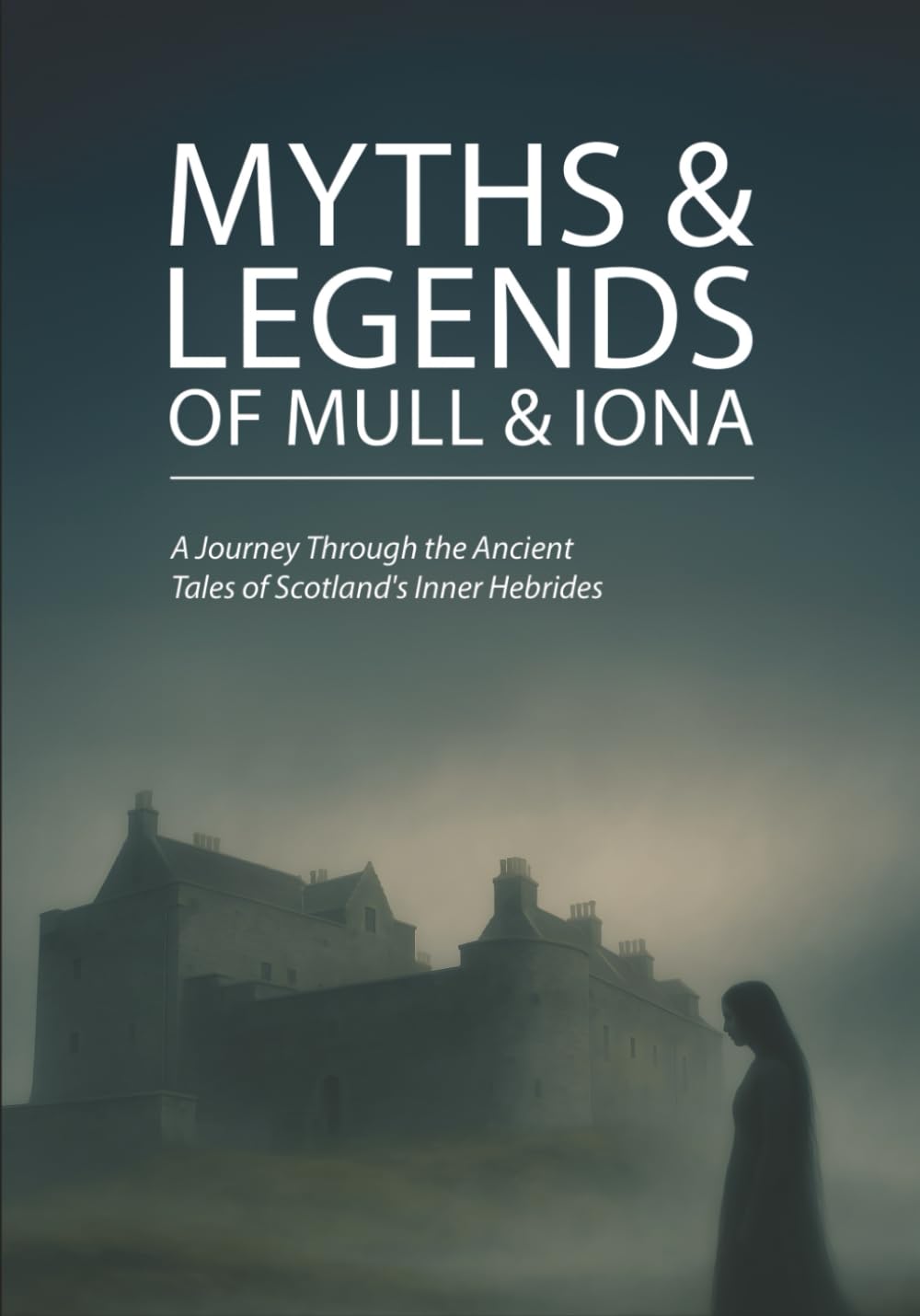Beneath the tranquil waters of Tobermory Bay on the Isle of Mull lies a secret steeped in legend and centuries of treasure-hunting dreams: the wreck of a Spanish galleon, often identified as the ‘San Juan de Sicilia‘. Its sinking in 1588, shortly after the defeat of the mighty Spanish Armada, is a tale woven with historical intrigue, local clan disputes, and even whispers of a powerful witch and a tragic princess.
The Armada’s Refuge and a Fiery End
After their crushing defeat in the English Channel, many battered Spanish Armada ships sought refuge along the stormy coasts of Scotland and Ireland. The ‘San Juan de Sicilia’ (though its exact identity is still debated among historians, sometimes also referred to as the ‘Florida’) found its way into Tobermory Harbour. Here, it sought vital repairs and provisions, likely attempting to resupply for the long journey home.
However, its stay wasn’t peaceful. Local accounts tell of a tense relationship between the Spanish commander and Lachlan Mor Maclean, the formidable chief of Clan Maclean, whose stronghold, Duart Castle, loomed over the bay. Though initially allied, perhaps with the Spanish aiding Maclean against rival clans, a dispute over payment or conduct escalated. Some versions of the tale even suggest that Lachlan Mor had taken five hostages aboard the Spanish ship as a guarantee during their contentious negotiations. Then, in a sudden, catastrophic explosion, the galleon was obliterated, sinking to the silty seabed, taking its secrets and any potential riches with it.

The Unexplained Explosion: Accident, Sabotage, or Witchcraft?
The true cause of the galleon’s demise remains hotly debated, fueling much of its enduring mystique.
One theory suggests an accidental explosion. The ship, already damaged and carrying vast quantities of volatile gunpowder, could have fallen victim to a careless spark or a structural failure.
However, more compelling (and dramatic) narratives point to sabotage, with whispers of deeper conspiracies:
The Maclean’s Revenge?
- The most popular local account credits Donald Glas Maclean, a figure dispatched by the Clan Chief. In this version, Donald Glas, perhaps seeking overdue payment or retribution for Spanish misdeeds, cunningly lit a fuse within the ship’s powder magazine, making a daring escape just moments before the blast.
Dòideag: The Witch of Tobermory
- Adding a supernatural twist to the tragedy is the legend of Dòideag, a powerful local witch or sorceress. Whether acting on behalf of the Macleans or independently, Dòideag is said to have used her dark arts to curse the ship, supernaturally igniting its gunpowder or conjuring the forces that led to its destruction. This magical intervention sometimes ties into another local tale: that of a Spanish princess aboard the galleon, who had fallen for a married local man. His jealous wife, seeking Dòideag’s aid, might have inadvertently sealed the galleon’s fate.
Step into a world where ancient legends breathe and history whispers from every stone. This enchanting book invites you on a captivating journey through the heart of Scotland's Inner Hebrides, a land steeped in magic and timeless tales.
A Spy’s Shadow?
- Beyond local feuds and ancient magic, a fascinating, though unconfirmed, historical theory suggests a darker, more far-reaching plot. It posits that the Spanish’s supplies in Tobermory were sourced from an agent connected to Sir Francis Walsingham, Queen Elizabeth I’s cunning spymaster. This raises the intriguing possibility of English espionage or a calculated political maneuver to ensure the war-battered galleon never left Scottish waters to rejoin the Spanish fleet, hinting at a web of Elizabethan intrigue beneath the placid surface of the bay.

The Enduring Allure: Centuries of Treasure Hunts
The prospect of a sunken Spanish galleon invariably conjures images of vast treasure, and the Tobermory wreck is no exception. Legend claims it carried a king’s ransom in gold ducats, drawing treasure hunters to the bay for over 400 years, often undeterred by the implied curse on those who seek its riches.
From Dukes to Divers: Early Attempts
- Initial salvage efforts, some as early as the 17th century, were rudimentary. The Duke of Argyll, whose clan later acquired rights to Mull, was among the first to sponsor attempts, using primitive diving bells and grappling hooks. These early expeditions reportedly yielded some cannons and scattered coins, but no great hoard.
Modern Technology, Persistent Dreams
- The 20th century brought renewed hope with advances in diving technology. Individuals and professional salvage companies, equipped with scuba gear, sonar, and magnetometers, have meticulously scoured the seabed. Colonel William Whitbread, of the brewing family, famously spent years and considerable fortune in the 1950s and 60s exploring the site. His efforts, and others since, have recovered numerous artifacts—cannons, timbers, pottery, and musket balls—all confirming the presence of a significant 16th-century vessel, almost certainly Spanish.

Despite these extensive efforts, the fabled “main treasure” has never been definitively found. The challenging conditions of the harbour, with its deep silt and often poor visibility, have made comprehensive recovery incredibly difficult. This enduring mystery only solidifies the galleon’s place in Scottish folklore, keeping the dream of gold alive for future generations.
The Tobermory galleon remains a fascinating blend of historical fact and captivating legend, a silent sentinel beneath the waves, forever guarding its secrets.


